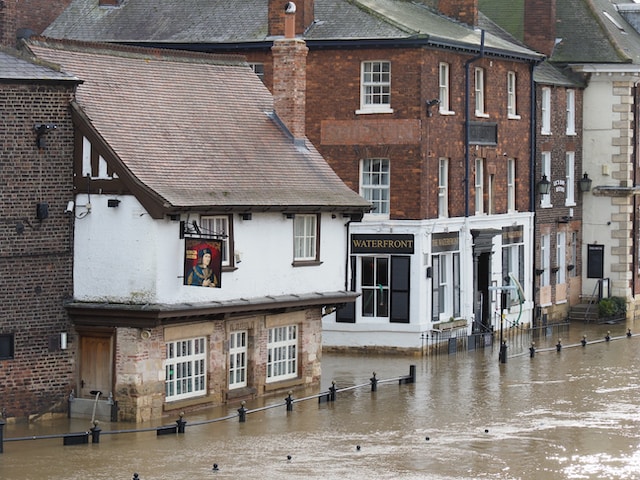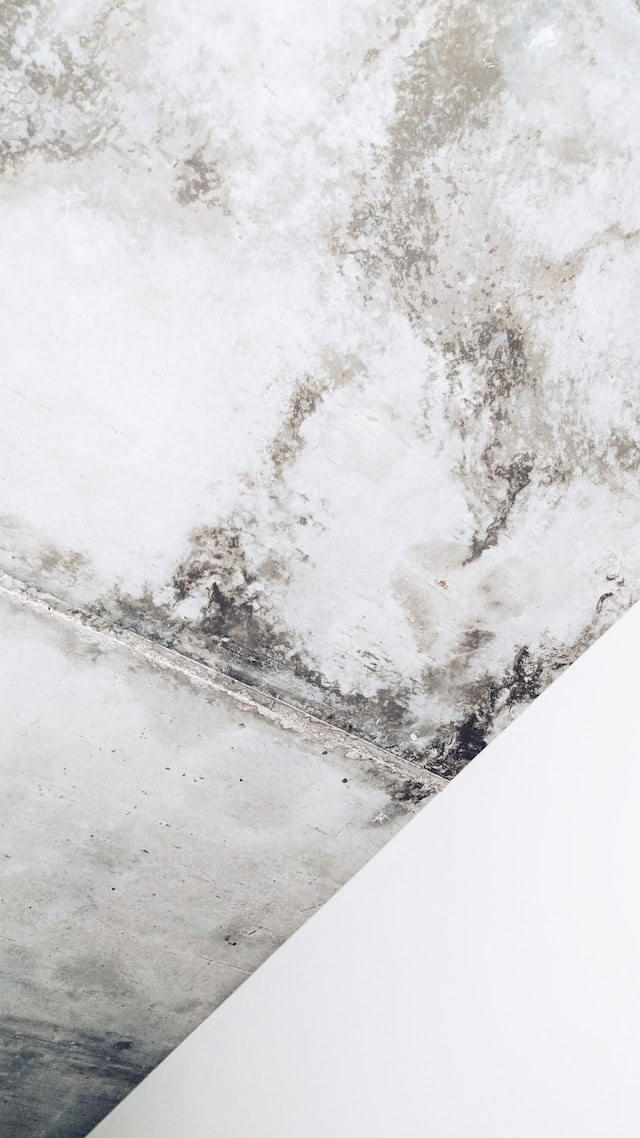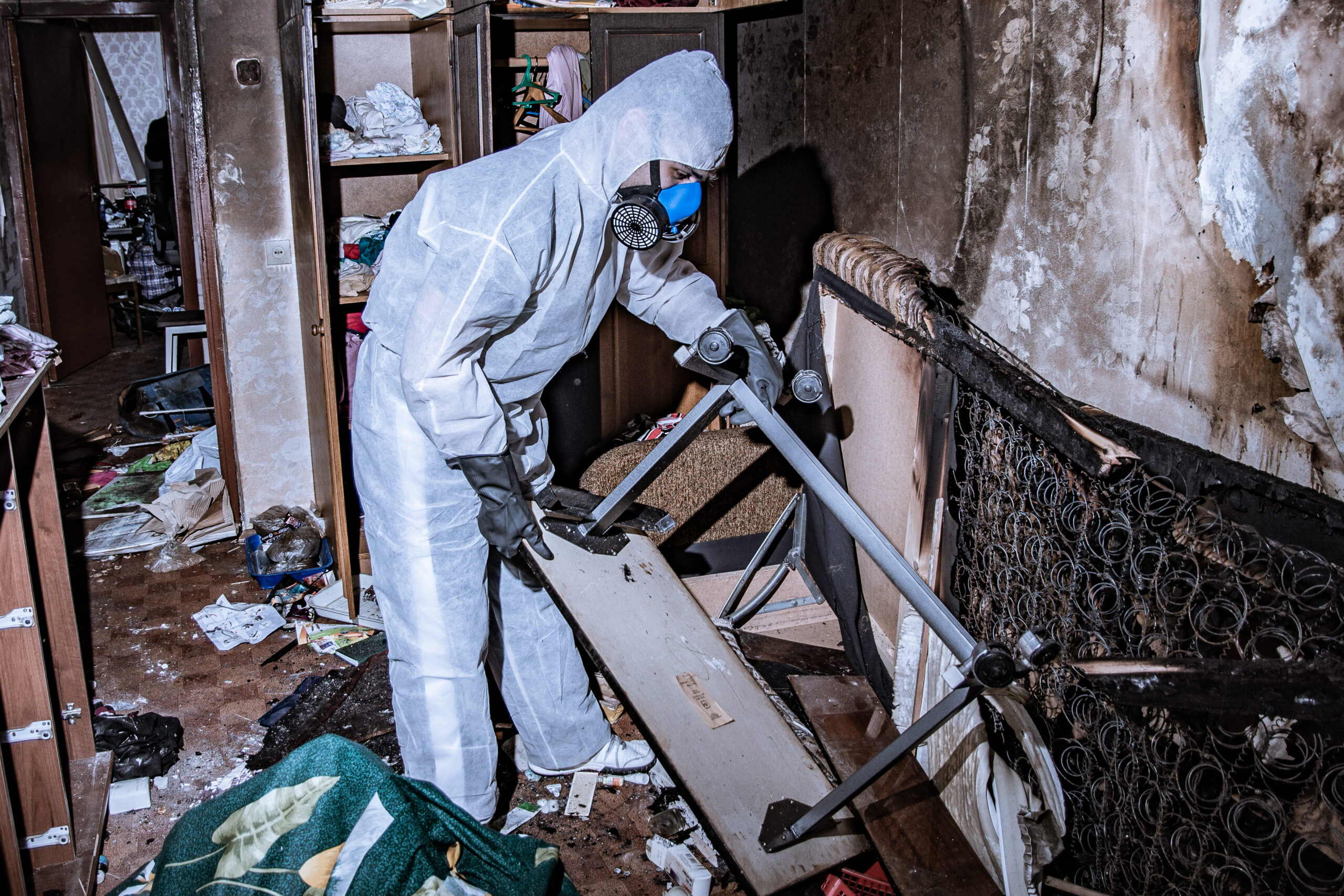Understanding what to do after a flood is crucial for homeowners and property managers, particularly in regions that experience longer rainy seasons or are prone to larger weather events. This blog post provides comprehensive guidance on how to begin post-flood care, mitigate potential water damage and navigate the restoration process.
We will delve into practical steps such as wearing protective clothing during cleanup, documenting damage for insurance claims effectively, and expedited drying using dehumidifiers. Furthermore, we’ll explore why hiring professional construction companies can be advantageous in major home disaster scenarios like house floods.
Maintaining hygiene during the cleanup process also plays an integral role when dealing with flooded homes. We offer insights into this aspect alongside discussing long-term restoration processes. Lastly, we’ll touch upon addressing the emotional impact of flooding – a facet often overlooked amidst physical repairs.
This guide serves as a valuable resource whether you’re preparing for heavy rains or recovering from them; knowing what to do after a flood could save you significant time and money while ensuring your safety.
Table of Contents:
- Prioritising Personal Safety After a Flood
- Documenting Damage for Insurance Claims
- Expedited Drying Using Dehumidifiers
- Hiring Professional Construction Companies for Restoration
- Maintaining Hygiene During Cleanup Process
- Long-Term Restoration Process
- Addressing the Emotional Impact of Flooding
- FAQs in Relation to What to Do after a Flood
- Conclusion
Prioritising Personal Safety After a Flood
When faced with the aftermath of a flood, your first concern should be personal safety. This involves wearing protective clothing during cleanup efforts and avoiding consumption of any food items exposed to potentially contaminated flood waters.
Importance of Protective Clothing in Post-Flood Cleanup
In flooded areas, it’s essential to begin post-flood care by taking care of yourself first. Wearing protective clothing is crucial when dealing with water damage from house floods or larger weather events caused by heavy rains or backed-up city sewers. Gloves, boots, and waterproof suits can help protect you from potential water damage while also reducing exposure to harmful bacteria that may have been brought into your home via storm drains or burst pipes.
Risks Associated with Consuming Food Exposed to Flood water
Floods can wreak havoc on a property, and food exposed to flood water must be discarded as it could contain contaminants. One often overlooked risk after such major home disasters is consuming food exposed to flood water.
If your house floods, 1 of the 6 things you must do include discarding all foods touched by flood waters as they could contain contaminants introduced during the flooding event – even if they were sealed or canned. The UK Food Standards Agency provides comprehensive guidelines on this matter.
Avoid drinking tap water until local authorities have confirmed its safety – boiling might not remove chemical pollutants present due to continuing rains in regions experiencing longer rainy seasons due to our damp climate.
The British Red Cross, among other organizations, offer flood clean-up kits which include disinfectants and other essentials for ensuring safe handling and disposal of contaminated materials following house floods.
Documenting Damage for Insurance Claims
The aftermath of a flood can be overwhelming. Don’t panic, but do document. Take photos and notes of all the damage caused by the flood. It’s like creating a visual CV for your insurance claim.
How to Effectively Document Property Damage
Prior to tidying up, ensure you have proof of the destruction. Take pictures of everything, from burst pipes to damp patches on walls and if your house floods often due to never-ending rain, keep a record of those instances too. It might help convince insurance companies to cover the damage.
- Note: Don’t forget to create an inventory list of all the damaged items. It’s like a shopping list for your insurance claim.
The Role of Photographs in Filing Insurance Claims
Photos can be a powerful tool for documenting the damage incurred during an insurance claim. Photos provide solid proof of what got damaged during the flood.
- Tips:
- – Take photos before and after cleaning up. Show the full story.
- – Capture water levels at their peak.
- – Get close-ups of specific damages, like soaked furniture or structural issues.
- – Don’t forget to snap shots of potential water damage outside, like storm drains struggling to do their job.
This visual evidence, combined with your written accounts, will make your insurance claim rock-solid. So be thorough and capture every detail. It’s like being a detective, but with less crime and more water.
Expedited Drying Using Dehumidifiers
Flooding can cause major water damage to your property. Once the flood waters have begun to retreat, it’s essential to act quickly and eliminate all that additional moisture. And guess what? Dehumidifiers are here to save the day.
Benefits of Using Dehumidifiers Post-Flood
A dehumidifier sucks the water out of the air, helping your place dry faster. Not only does it speed up the drying process, but it also helps prevent further water damage from those pesky continuing rains or a big storm that dumps buckets of water into your already flooded areas.
And if you live in a place like Yorkshire where it’s always damp and rainy, dehumidifiers are like superheroes. They keep the humidity levels in check, even after your house turns into a swimming pool thanks to burst pipes or backed-up sewers.
Preventing Mould Growth Through Effective Moisture Control
Mould is the ultimate party crasher after a flood. It loves moisture and can start throwing its own little shindig within 24-48 hours. But fear not – by using a dehumidifier, you create an environment where mould can’t thrive.
Not only does this keep you safe from mould-related health issues, but it also saves you a boatload of cash. Mould remediation services can be pricey, especially when you’re dealing with a full-blown mould rave caused by natural disaster repairs.
So, to sum it up: dehumidifiers are your best buddies when it comes to drying out your place after a flood. However, it is not the only solution available; enlisting professional help from specialised flood restoration teams like ours may also be necessary. You might also need some professional help from construction companies that specialize in disaster repairs.
After a flood, using dehumidifiers is essential to expedite the drying process and prevent further water damage. These superhero-like devices not only keep humidity levels in check but also help prevent mould growth, saving you money on costly remediation services.
Hiring Professional Construction Companies for Restoration
When your house floods, it’s a major issue, but don’t worry, there are experts out there who can help you deal with the mess. Hiring professional construction companies for disaster repairs is the way to go. They know all about flooded areas and can handle any level of water damage caused by heavy rains, backed-up sewers, or burst pipes.
Advantages of Hiring Professionals for Disaster Repairs
- Expertise: They have seen it all. They know how to deal with flooded areas, especially those that have longer rainy seasons due to a damp climate. They can quickly spot potential water damage and fix it like pros.
- Efficacy: With their cutting-edge equipment, they can drain large amounts of water from your property faster than you can say “storm drains.” Even if the rain keeps pouring or there’s a bigger weather event, they’ve got you covered.
- Safety: Dealing with house floods is no joke. But these professionals know how to handle it safely. They remove excess moisture to prevent further damage and keep you safe from nasty things like mould.
Safe Removal of Soaked Materials from Your Premises
Once the water has ebbed, it is time to discard all saturated materials. Flood restoration professionals have got your back – they offer flood clean-up kits that make sure no remnants are left behind to cause future problems. They’ll also help you with insurance claims, because let’s face it, not all insurance companies cover flooding due to natural disasters.
Maintaining Hygiene During Cleanup Process
After a flood in your house, it is essential to keep the area clean and orderly. Ensure that you are taking appropriate measures to safeguard your health and wellbeing during the cleanup process.
Health Hazards of Contaminated Water
When your house floods, the water can be full of nasty stuff like bacteria and chemicals. So, be careful and protect yourself from potential health hazards.
Wet/Dry Shop Vacuums: Your New Best Friend
When it comes to cleaning up after a flood, a wet/dry shop vacuum is your secret weapon. These machines are designed to suck up all that excess water and debris, making your life a whole lot easier. Plus, they help prevent mould growth which can make matters even worse after a flood.
Don’t forget to gear up with gloves and waterproof boots. You don’t want to be touching any of that stuff with your bare skin. So, stay clean, stay safe, and get that flood mess sorted out.
Long-Term Restoration Process
The extent of the damage will determine how long it takes to return properties to their original state, ranging from several months up to a year. This is not just about repairing physical structures but also dealing with potential water damage and mould issues due to continuing rains or damp climate.
Understanding The Timeline For Property Restoration
In most cases, you’ll need professionals who offer funding for major home disaster repairs such as burst pipes or backed-up sewers caused by heavy rains. They will begin work by removing excess moisture and then proceed with other necessary steps like replacing damaged items and reconstructing affected areas.
You may also have to deal with larger weather events that cause house floods – making it even more challenging. During these times, patience is key while ensuring all tasks are completed effectively.
Keeping Communication Lines Open During Restoration
Open communication between you, your insurance company, and contractors is vital during this stage. Insurance companies cover flooding primarily because they recognize it as one of the most devastating things homeowners can experience – particularly in regions which experience longer rainy seasons where storm drains struggle to drain large amounts of water quickly enough.
Your chosen restoration company should keep you updated throughout every step taken towards returning your property back to its pre-flood condition, including providing flood clean-up kits if needed. Our team prioritises client communication throughout their service delivery process.
This open dialogue ensures transparency regarding costs involved (including those covered by insurance), timeline expectations, and any changes in plans that might occur along the way.
Remember: taking care after house floods isn’t an easy task. It necessitates devotion, persistence and insight into the intricacies connected with each progression. But with the right support and guidance, you’ll be able to navigate through the challenges that come and successfully restore your property to its former glory.
After a flood, the long-term restoration process can be overwhelming and may take several months to a year. It is important to have open communication with your insurance company and restoration professionals throughout the process to ensure transparency and understanding of costs, timelines, and any changes that may occur.
Addressing the Emotional Impact of Flooding
After a flood, it is not only the material losses that require attention – the emotional effects must also be addressed. The emotional toll can be equally devastating and requires attention too. Remember, recovering from such an event takes time and patience.
Seeking Support and Counseling After a Flood Event
Floods are one of the most devastating things homeowners or commercial building managers can experience, and knowing what to do after a flood isn’t something you think about until after disaster’s already struck!
The emotional impact of these occurrences is not to be underestimated. Connect with people close to you or specialist advisors who can help guide you through this difficult time. Many organizations offer funding for counseling services after natural disaster repairs have begun work on your property.
If you’re feeling overwhelmed with stress or anxiety following a flood, consider seeking help from mental health professionals who specialize in dealing with post-traumatic stress disorder (PTSD) related issues resulting from natural disasters like flooding.
The NHS offers resources on how best to cope during these trying times as well as advice on taking care of your mental health whilst managing potential water damage repair works at home or at workplaces affected by backed-up sewers or burst pipes during heavy rains.
You might also find comfort in joining local community groups where people share their own experiences about coping with house floods and other types of natural disasters. Remember: You’re not alone in this journey towards recovery.
After a flood, it’s important to protect your property and keep everyone safe.
First, focus on personal safety – don’t go swimming in your living room!
Next, document the damage for insurance claims – pictures speak louder than soggy carpets.
Use dehumidifiers to dry things out faster – because nobody likes the smell of damp socks.
Hire a professional restoration team like ours – they know how to fix things without causing more chaos and help you with your insurance claims .
Keep things clean and hygienic during the cleanup process. Remember to wear gloves and protect yourself.
Understand that the restoration process takes time.
Don’t forget about the emotional impact of flooding – it’s okay to seek support and counseling.
So, remember these tips and you’ll be able to navigate the aftermath of a flood like a pro. If you need help with a flood, then feel free to contact our team.




